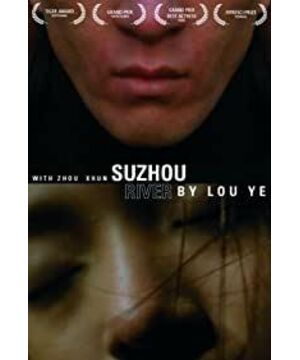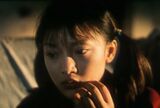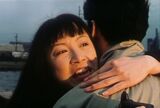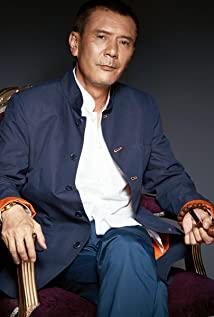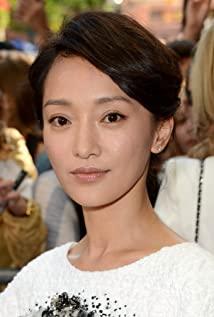"Suzhou River" is cut from the perspective of a photographer "I". The fragmentary shaking shots of Suzhou River at the beginning of the film carry all the love that Lou Ye from Shanghai has for this city. This is not some picturesque promotional video, in fact, "nearly a century of legends, stories, memories, and all the rubbish piled up here" makes Suzhou River one of the most "dirty" rivers. From the director's point of view, the "dirty" here is not dirty in the general sense, but reality. Whether it is the garbage floating on the river or the abandoned buildings by the river, it is the true original appearance of life. Lou Ye intends to emphasize "my camera does not lie" through such a beginning.
The film is not a simple narration structure, and the perspective is constantly switching during the narrative process. The first is the story of the photographer "I" and Meimei's falling in love. This story has been going on from the subjective perspective of "I", and all we hear are the monologues of "I". Until the appearance of another protagonist, the motor. Mada has been looking for a girl named Peony, and Peony and Meimei look alike. He suspects that Meimei is Peony. "I" heard about Ma Ma from Meimei, and felt that Ma Ma was making up. At this time, "I"'s monologue changed into a narration, and began to make up or recall the story of Ma Ma and Peony as a third person.
"I" first told a romantic love story, and at the end of the story, Ma and Peony fell in love. But soon "I" denied this ending, and elements of conspiracy and cruelty were added. Ma betrayed Peony, and Peony jumped into the Suzhou River. The story goes back to the beginning. Ma has been looking for peony, but found Meimei, which is very similar to peony. Mada suspects that she is Peony who disappeared a few years ago, but Meimei is "my" girlfriend...Mad finally finds Peony at a 24-hour convenience store. Both fell into the Suzhou River. It didn't take long for Meimei to disappear, but instead of looking for her, "I" chose to wait for the next love...
There is no reason to think that Lou Ye is playing suspense, as Zhang Yuan did in "Green Tea". Whether Meimei is a peony or not is actually not important in terms of results. Although in the process, the audience can even imagine, will Meimei think she is a peony under constant hints like Woman A in "Last Year in Marienbad"? In fact, it was announced early in the film that there were two corpses salvaged from the Suzhou River. The reunion of Ma and Peony/Mei Mei is a kind of comfort given by the director to the audience. This is not a closed structure, and people can make any satisfactory interpretation and conjecture about it.
The most impressive thing in the film is the long shot of Moto peeping at Meimei's outfit. Before Peony jumps into the Suzhou River, he tells Ma Ma that he will turn into a mermaid and come to him. And Meimei's career is to play the mermaid in the bar. Mada witnessed the process of Meimei's transformation into a peony. If you apply psychoanalysis and that set, this scene is a typical manifestation of voyeurism. Maa keeps Meimei in his gaze, focusing on her body and sensuality with peeping eyes, so that she becomes the object of his betting, and in this way he completely possesses her. Of course it's temporary.
The image of a mermaid also refers to the image of a beautiful woman on the upper body, but a cold fish tail on the lower body. When she only showed half of her body on the water, it was like the love in "Suzhou River". What floats on the surface is temptation, and what sinks underwater is danger. Peony turned into a mermaid, obviously because she wanted to escape from the love that made her feel hopeless. But Ma Ma clearly heard her say that she would come to him in the form of a mermaid. Is this the poor fantasy of the motor? I imagined that in the powerless search, Peony was in a trance in front of me.
View more about Suzhou River reviews


